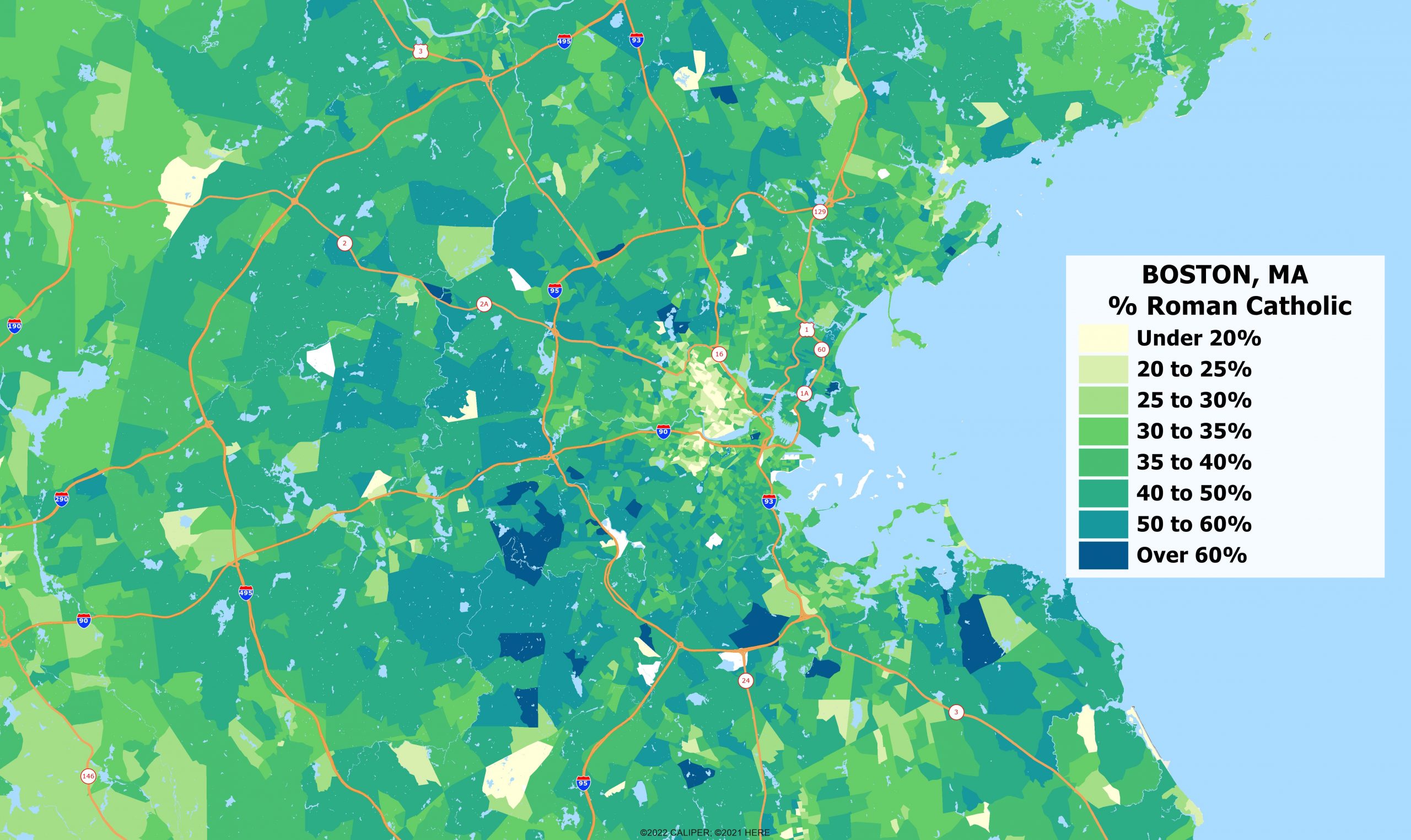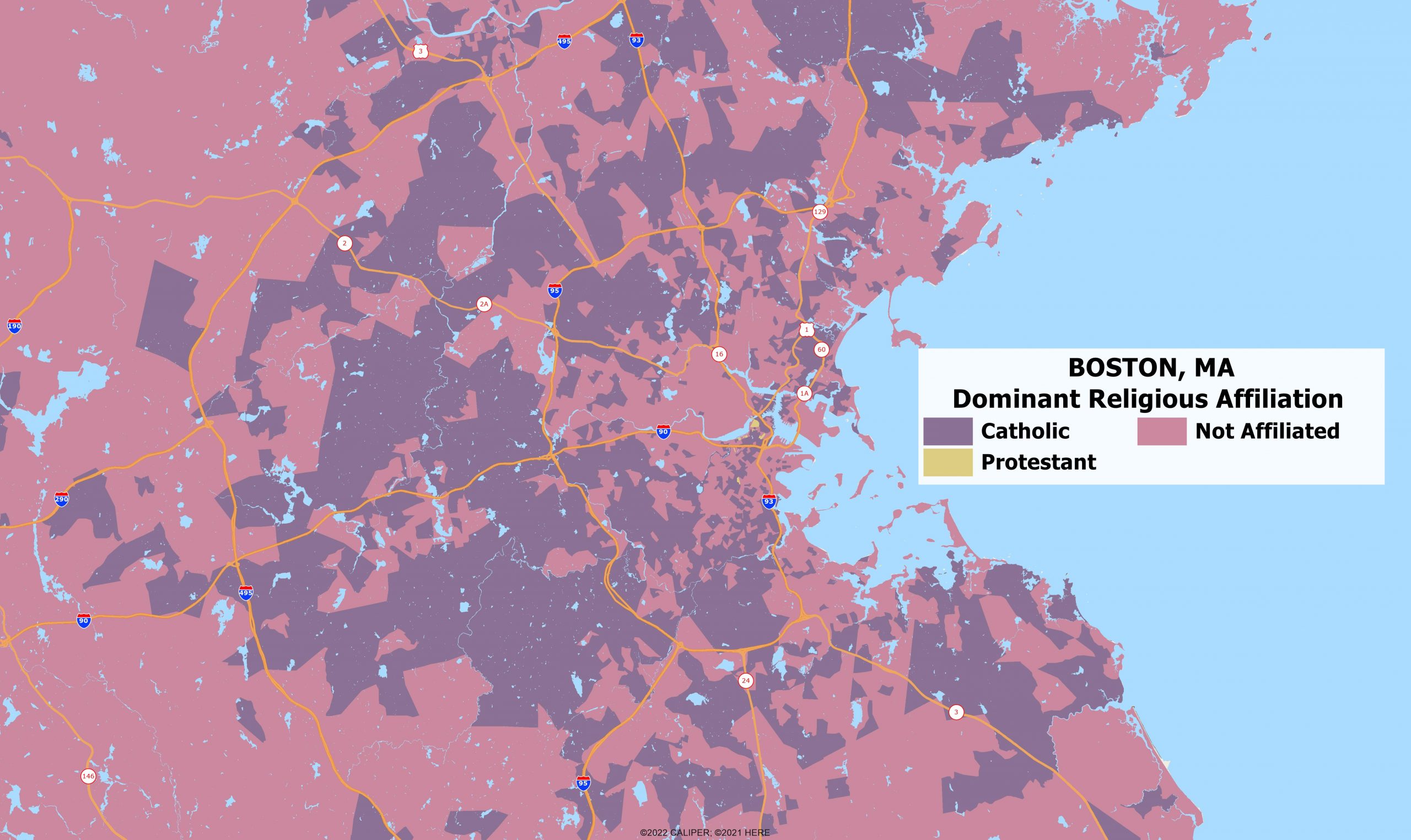When you think about Boston stereotypes, you likely think about Boston as being home to many Catholic people. This isn’t without merit—Boston is in the top 50 of all metropolitan areas for Catholic residents – 4th for metro areas with more than 1M residents – and is home to more than 300 Catholic churches. However, much like most major cities, Boston is changing and becoming more diverse, even in religious affiliation. What is changing in Boston, and why is religious affiliation important?
In the Boston metro area, which includes Cambridge and Newton, nearly 37% percent of the population identifies as Roman Catholic, the area’s most dominant religion. As you can see on the map below, there are several neighborhoods where more than 60% of residents are Catholic.

While they represent a much smaller total population in Boston, 2.1% of the population identifies as Islamic, which is significant. Nationwide, Boston has the 17th largest Islamic population, and there are a few pockets of the metro area that are home to more concentrated areas of Islamic people, with smaller percentages across most of the area.

Similarly, there are also pockets of Jewish households, with just over 1% of the Boston metro area identifying as Jewish.

Of course, most of the population of Boston doesn’t have any dominant religious affiliation, much like most parts of the country. The map below highlights again the areas of Boston that are dominantly Catholic, but also those that have no religious affiliation at all.

We released Religious Affiliation after customer requests for the data. This small database fills an important gap in the AGS core demographics series. Religious affiliation has not been addressed by the census bureau in many decades, and most sources are based on consumer panel data or political polling and have minimal geographic content. Others have detailed data at the county or state levels but lack small area estimates.
Religious affiliation can have significant impacts on consumer spending and behavior. For some retail sectors, it can have a critical impact on product mix, shopping style, and even staffing. One segment of retail that this data will be critical for is grocery, as many religions often come with times of dietary needs. As an example, for Boston, grocery stores in high Catholic areas might consider changing their products to include more Seafood during lent.
